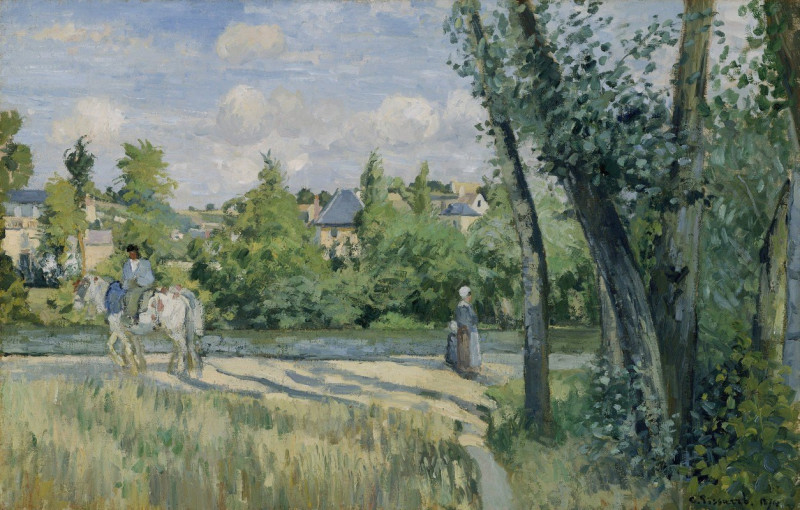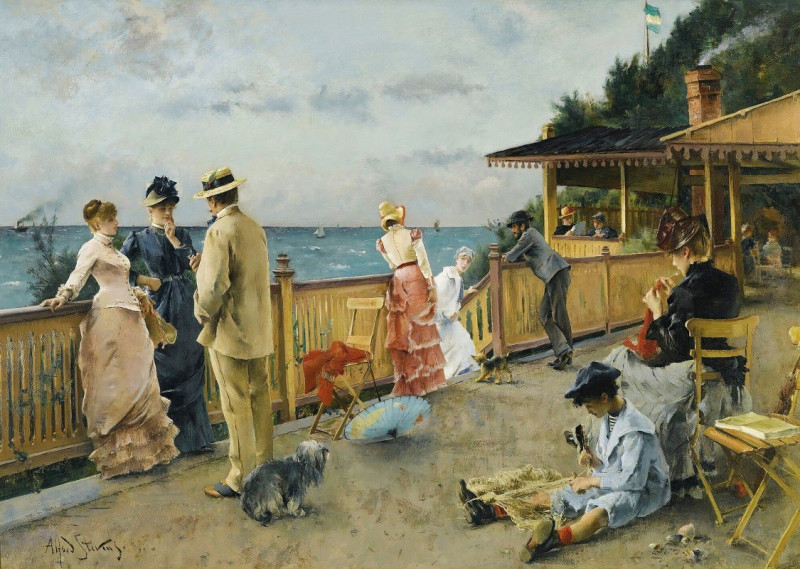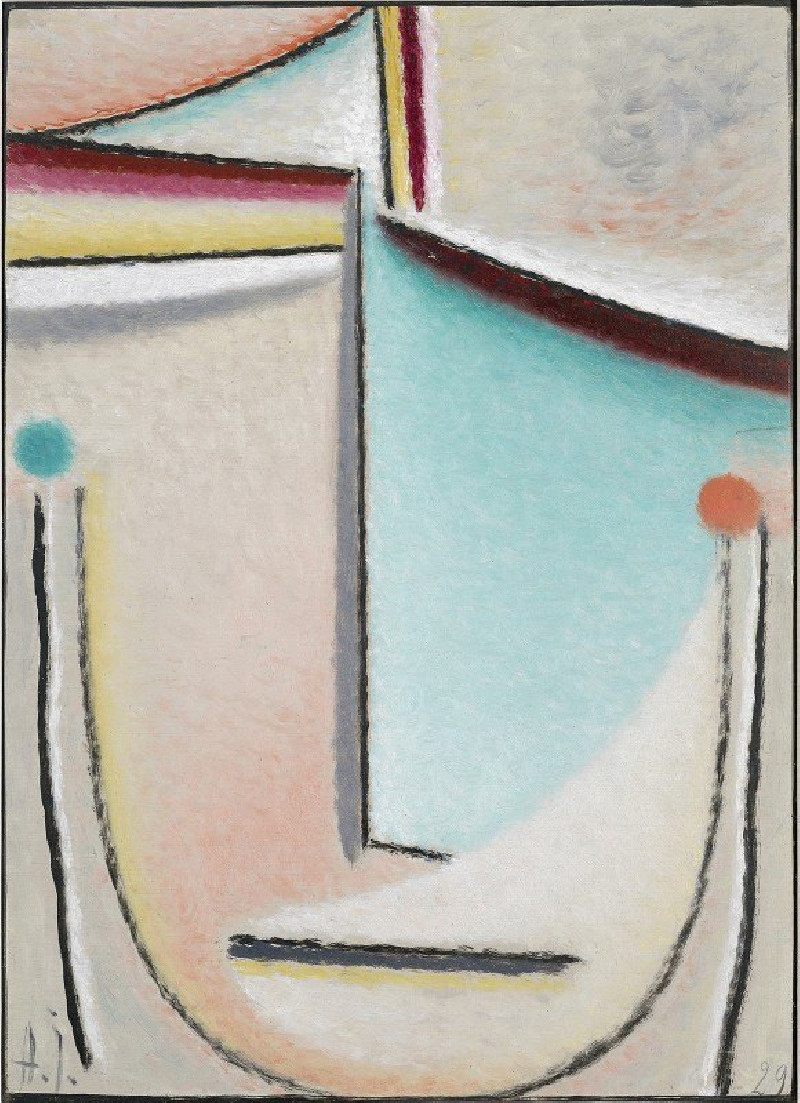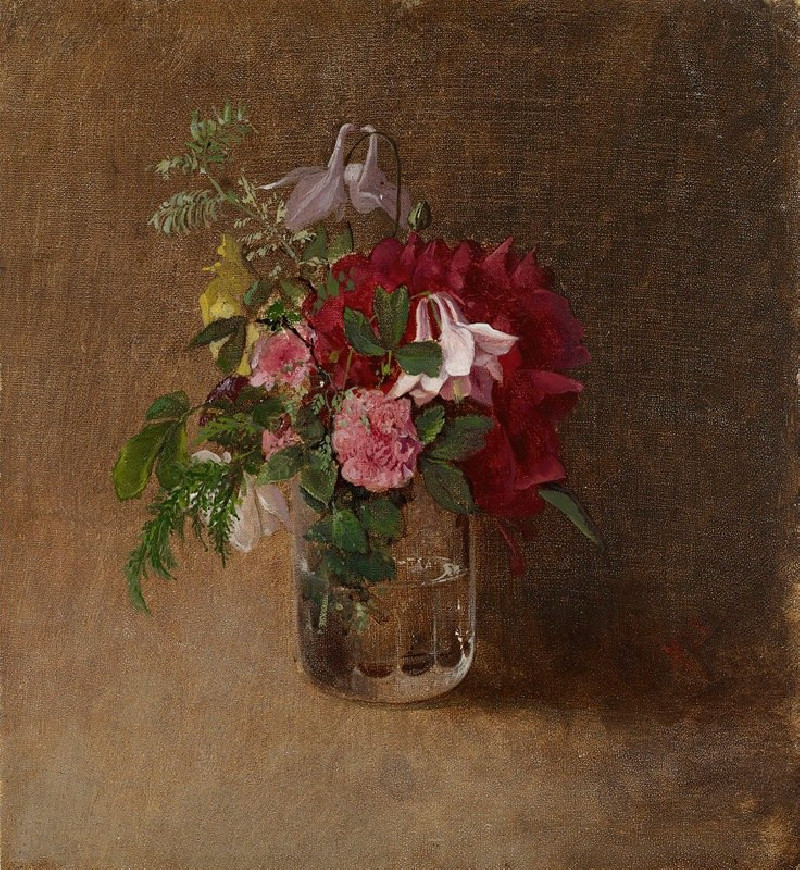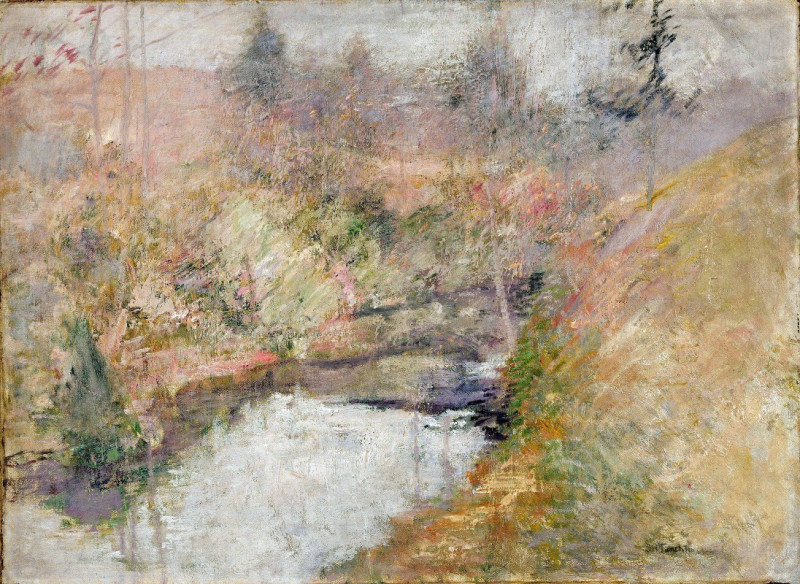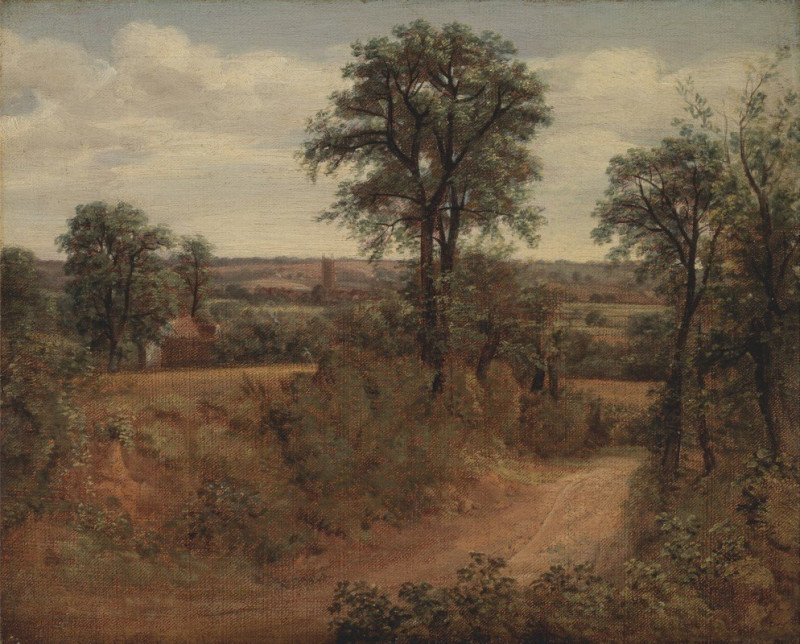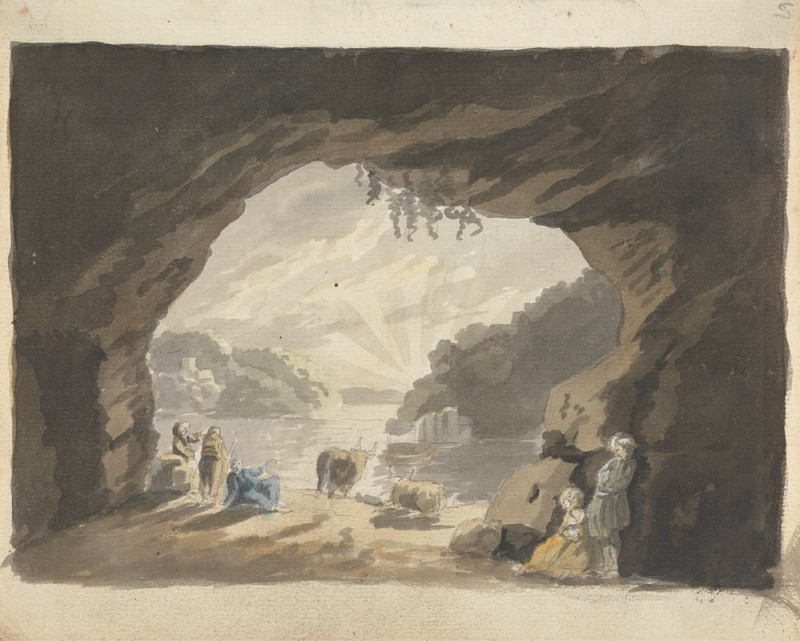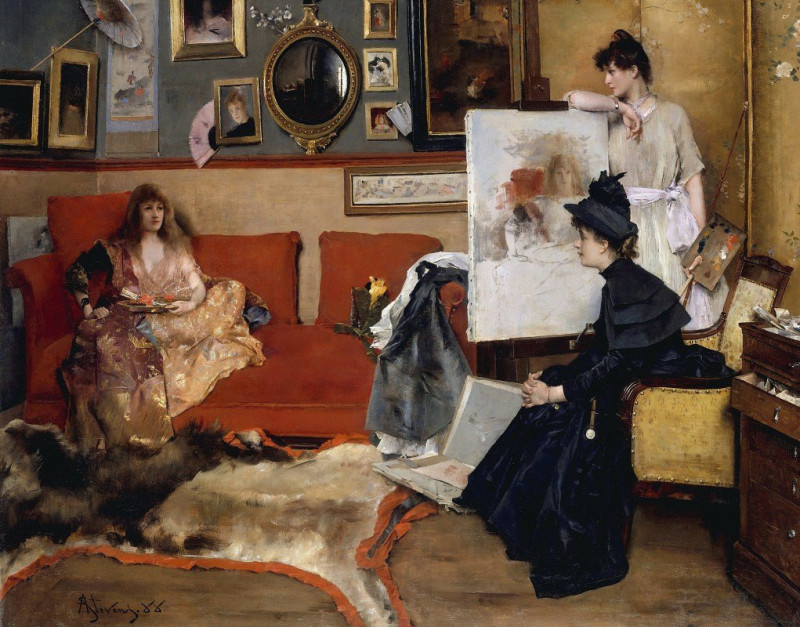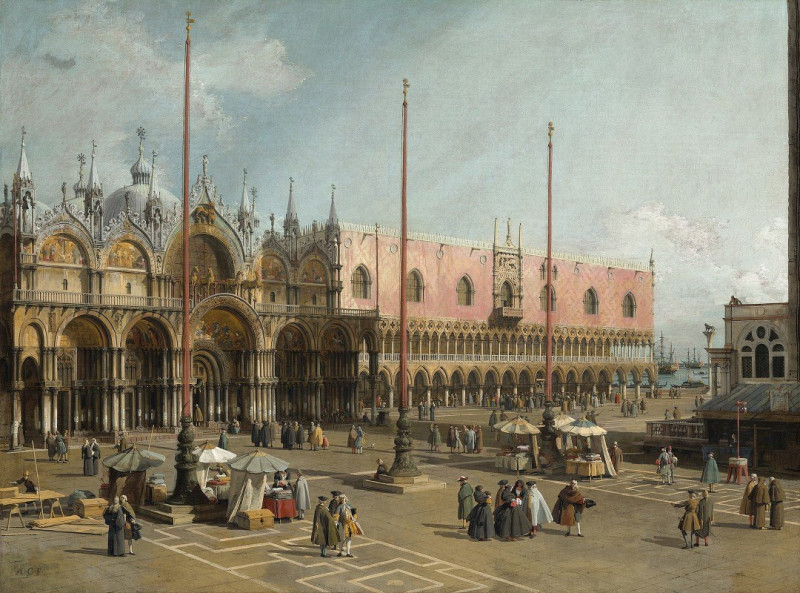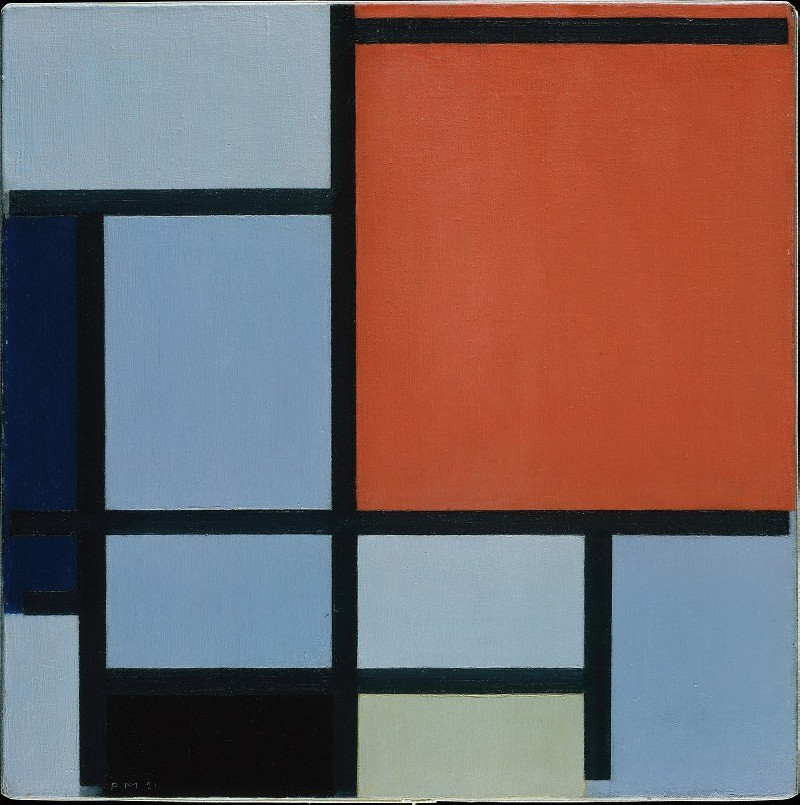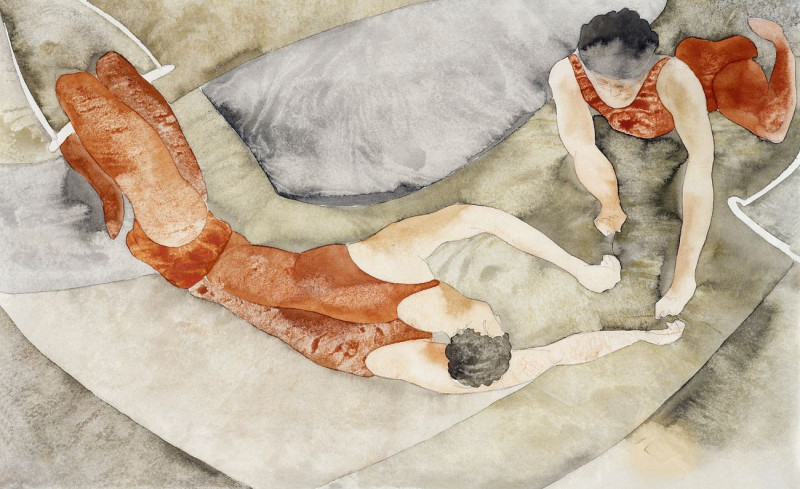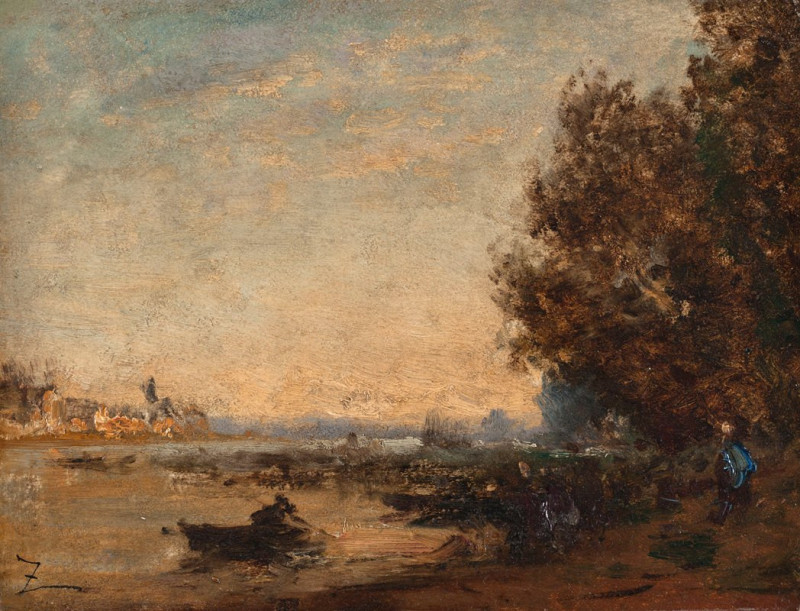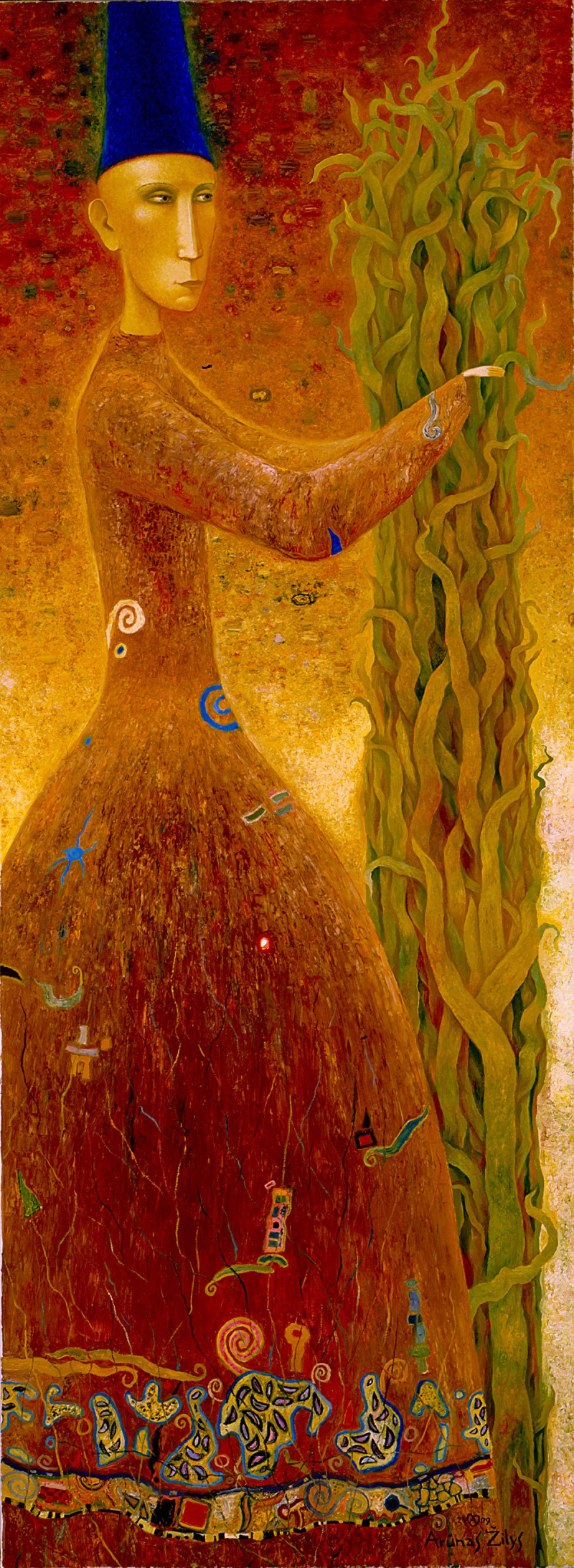Sunlight on the Road, Pontoise (1874)
Technique: Giclée quality print
Recommended by our customers
More about this artwork
"Sunlight on the Road, Pontoise" by Camille Pissarro, painted in 1874, captures the idyllic essence of rural France through the lens of the Impressionist movement. This painting depicts a serene moment on a sunlit road in the village of Pontoise, a frequent subject of Pissarro's work and key location in the Impressionist era. The scene is lively yet peaceful, with the central focus on a figure riding a horse, accompanied by another figure walking beside him, likely engaging in casual conversation or enjoying a quiet moment of companionship.The composition is characterized by vibrant, yet subtle, brushstrokes that create a dynamic interplay of light and shadow, illustrating Pissarro's fascination with natural lighting and its effects on the landscape. The road, dappled in sunlight, curves gracefully into the background, leading the viewer's eye towards the quaint houses nestled amongst lush trees.The use of color is notable, with the greens of the trees and the golden hues of the path contrasted against the soft blue of the sky, creating a harmonious and inviting landscape. This painting not only reflects the visual beauty of the countryside but also embodies the tranquility and slower pace of rural life, which was a central theme in many of Pissarro's works.
Delivery
Returns
Blessed are they who see beautiful things in humble places where other people see nothing. — Camille Pissarro
Camille Pissarro (1830-1903) was born on St.Thomas (now the US Virgin Islands) to a Portuguese father and a Dominican mother. He went to Paris to study art at Ecole des Beaux-Arts. He was an early pioneer of pointillism and neo-impressionism and later became a mentor of many famous impressionist painters including Cezanne, Manet, Renoir, and Gauguin. His paintings depicted rural and urban French landscapes and lifestyle. Many of his works politically captured images of peasants and laborers. Today, he is considered the father of impressionism.

